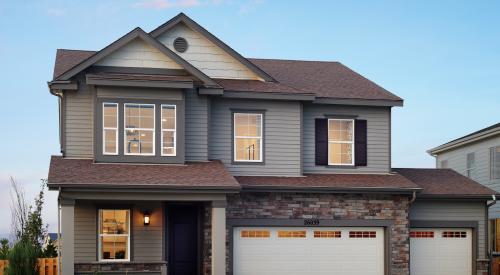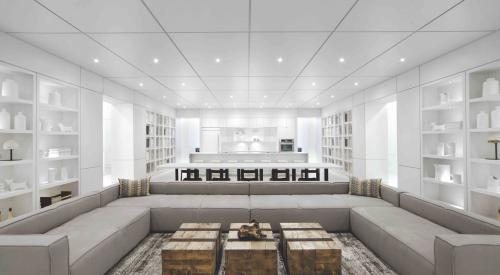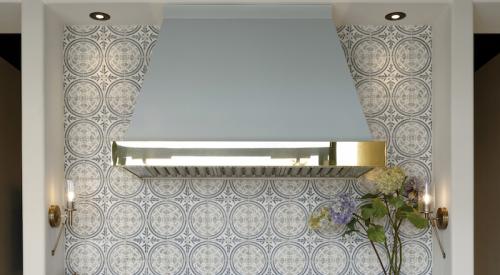|
It pays to have a home staged properly. Those small touches of plants, mirrors, pillows and afghans give your homes the homey feel that sells. Home staging is about packaging a home to show off its best features and downplay the flaws.
According to research by StagedHomes.com, a staged home will sell an average 17 percent higher and 13 percent faster then an un-staged home. In a bare room, buyers look at the flaws instead of looking at the flow of one room to another. Is the drywall smooth? Will those bumps in the carpet from last week's sale come out? Why doesn't that molding fit perfectly? Why is the light switch in the middle of the wall?
Christy Scanlon, COO of Masterpiece Interiors in Winter Park, Fla., acknowledges the troubles of home builders' finances but insists staging — even on the tightest of budgets — is crucial. "We have definitely been challenged in the current market. It has caused us to develop more creative and ingenious
 Don’t be afraid to choose a slightly offbeat color when you’re painting, Nancy Hall says “Paint is nearly always the least expensive and most impactful design solution.” Note the added step of including prop food. Makes people feel comfortable (and thirsty).  Here you see how strategically placed and repurposed products have brought a dramatic and modern look to an otherwise sparce area. "We are also seeing more use of 're-purposed' or move-over furnishings as a cost-cutting measure," says Debra Bernard.  What kitchen appliances to include? Is stainless steel still 'in'? Real tile or linoleum? Also, consider using artificial plants for decorative effect – after all, you won't need to water the plastic plants every other day.  Room additions are a natural setting for you to decorate with hobbyist, outdoorsy motifs and vacation-related photos. And if you're not a big fan of the quirky fish on the wall, it's a heck of a lot better than a singing trout.  Notice the lack of a window treatment and the understated room accessories. Often you can get away with skimping quite a bit in tertiary rooms such as these.  Now that's a lot of green! Continuity in the color scheme can help you cheat a bit. "For some reason, sage won't go away. It's back," Debra Bernard says. |
"When budgets are tight, the first thing that needs to be tossed out is the idea that there is one and only one 'best solution' to a design challenge. High-value, cost-effective design solutions are available everywhere," insists Nancy Hall, vice president of business development for Pacific Dimensions in El Segundo, Calif. Examples include using less expensive furniture to form the basis of the room while adding interesting, higher-priced items as accent pieces. She notes that cotton print fabrics provide both impact and interest without the added cost of European textiles. Color is important in bringing a wow factor; paint is one of the least expensive and most effective design solutions, she says.
Hall recalls that before the downturn, design focused heavily on an upward quest for luxury with elaborate built-ins; multi-layered bedding and draperies; and an emphasis on high-end upgrades. "Design is moving away from excess and anything that shouts 'Look at me!' to a new form of design expression," says Hall, adding, "People still want comfort and luxury in their homes, but it needs to be subtle, understated and relevant."
First to GoSo where should builders focus? And what ideas should they avoid? The first home accent to go might vary but the principles are the same.
"We generally start with the flooring as this is one of the largest areas of expense," says Patti Guthrie, vice president model merchandising for Marc-Michaels, also in Winter Park, Fla. "There are some incredible porcelain tiles out right now that look great when down. We can replace costly stone with tile and still have a beautiful look," she says. Additionally the firm will look at value engineering the millwork package. Using applied moldings in the main areas and cutting back on this in the secondary rooms can save builders a lot.
Debra Bernard, president of The Bernard Partnership in Walnut Creek, Calif., first tosses plants. "In terms of merchandising, we start off with plants. Live plants have to be maintained, so they go first. Usually they'll put in silks or none at all." Next on the list is expensive furniture and built-ins, which can be costly. "You have to think of all this at a cost-per-square-foot basis," she says, adding, "A lot of builders are kicking around numbers like, 'I want to be at 20 bucks a foot,' which is very skimpy. That's fine, of course, if you're going for a minimalist, Ikea-inspired look that resonates well with many demographics."
What WorksThe minimalist look works on several different levels. "The colors aren't as trendy. People aren't trying the real new things. Taupe, beige, a lot of browns and off-whites are in. I'd call it basic colors. For some reason sage won't go away. It's back," Bernard says.
You can't afford to not target any age group when you decorate, says Bernard. "It's tricky. It has to work for my 25-year-old niece and for my sister. Do you decorate for people that are 25 or 55? It depends on your target. People in general are simplifying their life, whether it's due to the economy or life stage." Guthrie says the Santa Barbara look, with its open spaces and minimal millwork and background elements, has gone over well with her customers. Scanlon also sees an advantage to this sort of universal decorating. "An oversized contemporary vase on a cocktail table is a great look and is very acceptable versus a more traditional style that may require a couple of obelisks, a floral and a stack of cocktail-table books," she says.
Vignettes to the RescueSo, the budgets are tight and buyers are spotty. How often have merchandisers and designers been "refreshing" model homes lately? Guthrie says her production builders have asked the firm to refresh their models about every 10–12 months. "Maybe the builder thought he had empty-nester buyers when he actually had young professionals. Merchandising to the different buyer helps the subliminal process to make the buying decision as they walk through," she says, adding that her firm has done more specifying work than the lower-cost vignettes that have been popular with cash-strapped builders.
Bernard says some builders were asking her to make vignettes of some houses. "Do we do as much as a decorator? No. We know enough to be dangerous. We don't profess to be interior designers, but we have a darn good idea what looks good." Hall and Guthrie agree that vignettes, while better than nothing, aren't always the most effective tactic worried builders should take because vignettes don't always answer all the budget questions. In this marketplace, builders may ultimately decide to furnish fewer models, rather than vignette some and furnish others.
"We are also seeing more use of 're-purposed' or move-over furnishings as a cost-cutting measure for builders in their merchandising program," says Bernard, "This can be a good solution when strong color is introduced to give re-purposed models a fresh look.
No matter the home-buying demographic, the interior designer and builder need to work as a team to ensure that all aspects of the merchandising program appeal to their marketplace. The job of the merchandiser is to understand who the buyers are and inspire — not overwhelm — them. This is especially important today in the demonstration of options and upgrades within the models. "First-time buyers want to know what is included and understand how their home will look," says Hall. "Designers shouldn't depend on upgrades to carry the day. Even a 'standard' home can look great with the right approach to design."
|











